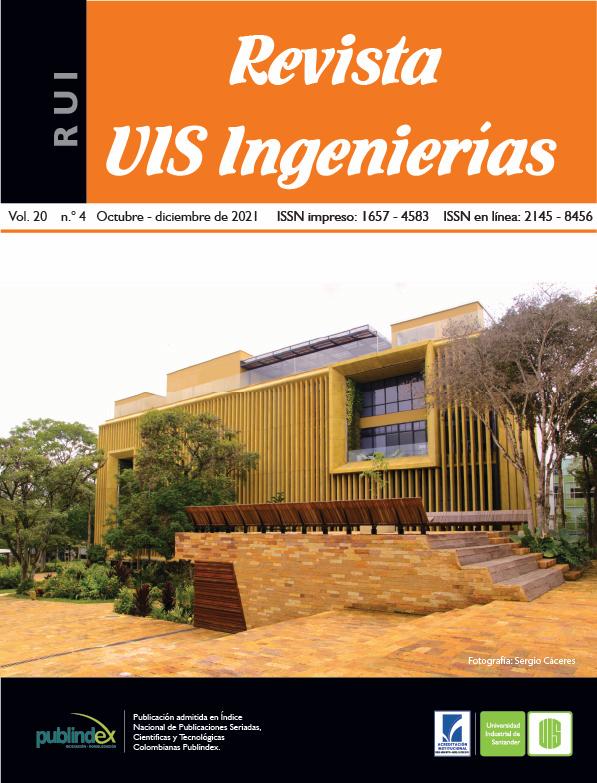Published 2021-07-07
Keywords
- blood pressure,
- Electrocardiogram,
- mobile monitor,
- Photoplethysmogram,
- PPG morphology
- PTT ...More
How to Cite
Abstract
The main objective of this research is based on finding out some assertive and robust Photoplethysmogram’s PPG & Electrocardiogram’s ECG blood pressure-related parameters by the implementation of a novel method with innovations in signal processing and analysis. The biomedical ECG and PPG signals are recorded using a mobile monitor CardioQVark. To increase the cuffless blood pressure measurement accuracy, a technique that involves not only the ECG and PPG joint parameters extraction but also some individual PPG’s morphology features, is proposed in this work. Firstly, the biomedical ECG and PPG signals are time–frequency filtered. Secondly, some novel parameters from the morphology of photoplethysmogram signal, which may be correlated with blood pressure, are considered in addition to the pulse transit time. Additionally, a neural network is built to determine the relationship between the estimated and reference blood pressure. Finally, the correlation coefficient and regression line are obtained to evaluate the feasibility.
Downloads
References
[2] M. Elgendi, “On the Analysis of Fingertip Photoplethysmogram Signals,” Current Cardiology Reviews, vol. 8, no. 1, pp. 14-25, 2012, doi: 10.2174/157340312801215782.
[3] M. Singla, S. Azeemuddin, P. Sistla, “Learning-Based Model for Central Blood Pressure Estimation using Feature Extracted from ECG and PPG signals,” in 42a In 2020 42nd Annual International Conference of the IEEE Engineering in Medicine & Biology Society (EMBC), 2020, pp. 855-858, doi: 10.1109/EMBC44109.2020.9176593.
[4] “CardioQVARK, Control of the cardiovascular system,” 2020. [Online]. Available: https://cardioqvark.ru
[5] S. Rezk, C. Join, S. El Asmi, “An algebraic derivative-based method for R wave detection,” in 19th European Signal Processing Conference, 2011, pp. 1578-1582.
[6] J. Hart, “Normal resting pulse rate ranges,” Journal of Nursing Education and Practice. vol. 5, no. 8, pp. 95-98, 2015, doi: 10.5430/jnep.v5n8p95.
[7] M. Unser, A. Aldroubi, “A review of wavelets in biomedical applications,” Proceedings of the IEEE, vol. 84, no. 4, pp. 626-638, 1996, doi: https://doi.org/10.1109/5.488704.
[8] M. Singla, P. Sistla, S. Azeemuddin, “Cuff-less Blood Pressure Measurement Using Supplementary ECG and PPG Features Extracted Through Wavelet Transformation,” in 41st Annual International Conference of the IEEE Engineering in Medicine and Biology Society (EMBC), 2019, pp. 4628-4631, doi: 10.1109/EMBC.2019.8857709.
[9] X. He, RA Goubran, XP Liu, “Secondary Peak Detection of PPG Signal for Continuous Cuffless Arterial Blood Pressure Measurement,” IEEE Transactions on Instrumentation and Measurement, vol. 63, no. 6, pp. 1431-1439, 2014, doi: 10.1109/TIM.2014.2299524.
[10] S. Datta, R. Banerjee, AD Choudhury, A. Sinha, A. Pal, “Blood pressure estimation from photoplethysmogram using latent parameters,” in IEEE International Conference on Communications (ICC), 2016, pp. 1-7, doi: 10.1109/ICC.2016.7511599.
[11] P. Shi, S. Hu, Y. Zhu, J. Zheng, Y. Qiu, P. Cheang, “Insight into the dicrotic notch in photoplethysmographic pulses from the fingertip of young adults,” Journal of medical engineering & technology, vol. 33, no. 8, pp. 628-633, 2009, doi: 10.3109/03091900903150980.
[12] A. N. Kalinichenko, “Algorithmic support of ECG analysis of the system of remote cardiological monitoring,” in Proceeding of the 20th conference of fruct association, 2018, pp. 112-117.
[13] M. Chaykovskaya, A. Kalinichenko, E. Fetisova, S. Mironovich, A. Kiprensky, “Artificial Rhythm Recognition Using Portable Cardiomonitor and Mobile Application,” in Proceeding of the 43th Confidence Computing in Cardiology, Vancouver, 2016, pp. 97-100.
[14] A. N. Kalinichenko, M. K. Chaykovskaya, D. A. Danilova, “Paced ECG Analysis in Mobile Cardiac Monitor,” in Proceedings of the 43rd Conference Computing in Cardiology, Vancouver, 2016, pp. 649-652.
[15] О. В. Сенько and Oleg Sen’ko, “Non-Invasive Arterial Pressure Estimating With the Cardiac Monitor CardioQvark,” Matematicheskaya Biologiya i Bioinformatika, vol. 12, no 2, pp. 536-545, 2017, doi: 10.17537/2017.12.536.
[16] M. Y. Man Wong, C. C. Yan Poon, and Y. Y. Ting Zhang, “An Evaluation of the Cuffless Blood Pressure Estimation Based on Pulse Transit Time Technique: a Half Year Study on Normotensive Subjects,” Cardiovascular Engineering, vol. 9, no. 1, pp. 32-38, 2009, doi: 10.1007/s10558-009-9070-7.
[17] X. He, R. A. Goubran, X. P. Liu, “Secondary Peak Detection of PPG Signal for Continuous Cuffless Arterial Blood Pressure Measurement,” IEEE Transactions on Instrumentation and Measurement, vol. 63, no. 6, pp. 1431-1439, 2014, doi: 10.1109/TIM.2014.2299524.
[18] X. R. Ding, Y. T. Zhang, J. Liu, W. X. Dai, H. K. Tsang, “Continuous Cuffless Blood Pressure Estimation Using Pulse Transit Time and Photoplethysmogram Intensity Ratio,” IEEE Trans. Biomed. Eng., vol. 63, no. 5, pp. 964-972, 2016, doi: 10.1109/TBME.2015.2480679
[19] A. I. Khuri, “Introduction to Linear Regression Analysis,” International Statistical Review, vol. 81, no. 2, pp. 318-319, 2013, doi: 10.1111/insr.12020_10.
[20] M. T. Hagan, H. B. Demuth, M. H. Beale, Neural Network Design. Boston, MA, USA: PWS Publishing, 1996.


